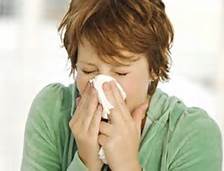What You Need To Know
About Cold and Flu
About Cold and Flu

|
Plato |
Most of us live such fast paced lives these days that we rarely take the time to slow down and get some rest. When we get sick we are either forced to rest because our bodies won't let us do anything else or we try to power through the symptoms and go about our lives anyway. Sound familiar? If you are like most people, you don't have time to get sick but occasionally it happens anyway. So what do you do when the symptoms strike? Do you listen to your body and get extra rest or do you try to ignore your symptoms and do everything you would typically do? Perhaps it's somewhere in between. And of course it all depends on the illness and the symptoms you are experiencing.
You know you don't feel well, but what is it? It's sometimes hard to distinguish between a common cold and mild flu. Is your nose stuffy? Do you have the chills? What's your level of fatigue? The answers to these questions can often differentiate one sickness from the other.
Both colds and various influenzas are caused by a wide variety of viruses (not bacteria). In general, cold symptoms include coughing, sneezing, and mucus buildup in the nose; flu symptoms include body aches, chills, and fever. A number of different viruses cause the minor infections of the nose and throat that result in colds. But the rhinovirus, long blamed for cold symptoms, may not directly cause colds, as once believed. According to a recent study, the rhinovirus changes the activity of the body's genes, which then trigger cold symptoms.
People in the United States make more visits to the doctor for colds than for any other condition, according to the American Lung Association. Adults typically get two to four colds a year, while children average six to eight. One to three days after contracting a cold virus, symptoms start and include: runny nose, congestion, sneezing, scratchy throat and cough, and reduced sense of taste and smell.
Young children may develop a fever. Colds enter the body through the nose or mouth. The virus can become airborne when a sick person coughs, talks, or sneezes. The virus can also be spread by contact with a sick person. Most colds stem from viruses that are spread from person to person through close contact. We inhale the virus-laden air that others have exhaled. Aside from airborne causes, we can "catch a cold" when we have the virus on our hands and touch our face, mouth, or nose. You can catch a cold even when you cannot recall being around anyone with a cold. It's not really a mystery - people can excrete [exhale] the cold virus for at least 24 hours before they become sick. Thus, the person from whom we caught the cold was without any symptoms when [he] passed the virus on to us. Sometimes you may mistake cold symptoms for allergic rhinitis (hay fever) or a sinus infection. If your cold symptoms begin quickly and are improving after a week, then it is usually a cold, not allergy. If your cold symptoms do not seem to be getting better after a week, you may have developed an allergy or sinusitis.
Flu symptoms are usually more severe than cold symptoms and come on quickly. Symptoms of flu include sore throat, fever with nausea of more than 102 degrees, headache, muscle aches and soreness, congestion, and cough. Swine flu in particular is also associated with vomiting and diarrhea. Most flu symptoms gradually improve over two to five days, but it's not uncommon to feel run down for a week or more. A common complication of the flu is pneumonia, particularly in the young, elderly, or people with lung or heart problems. If you notice shortness of breath, you should let your doctor know. Another common sign of pneumonia is fever that comes back after having been gone for a day or two. Just like cold viruses, flu viruses enter your body through the mucous membranes of your nose, eyes, or mouth. Every time you touch your hand to one of these areas, you could be infecting yourself with a virus, which makes it very important to keep your hands germ-free with frequent washing to prevent both flu and cold symptoms. Flu can strike entire populations who have inadequate immune strength. Catching a cold or flu virus is more likely in crowded work, home and school condition. Airline travel and airports are also prime sources for virus transmission, as well as sporting and entertainment events.
- What is one of the easiest ways to wipe out germs and viruses
- Why using antibacterial cleansers is the mistake











